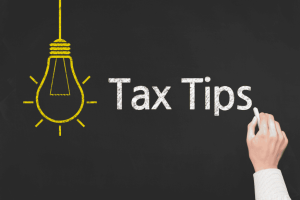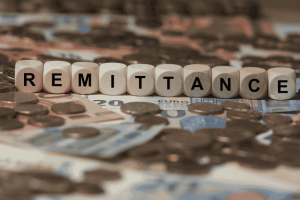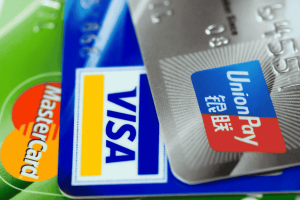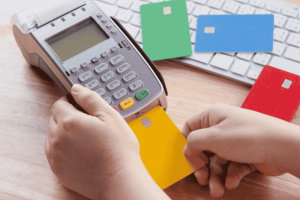Have you ever wondered if those credit card cashback offers are really as good as they sound? With so many banks advertising “money back on every purchase,” it’s tempting to sign up and start spending. But is cashback truly a smart way to save, or are there hidden catches you should know about?
Let’s break down how credit card cashback programs work, what to watch out for, and how you can decide if they’re worth it for your lifestyle.
What Is a Credit Card Cashback Program?
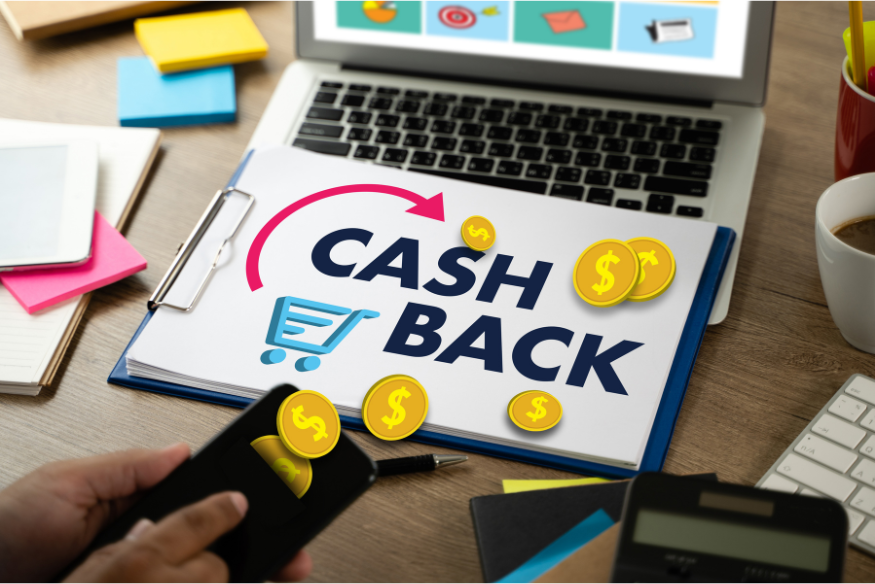
A cashback program is a feature offered by many credit cards where you earn a percentage of your spending back as cash rewards. For example, if your card offers 2% cashback and you spend $500, you’ll get $10 back—simple as that.
Key features:
- Cashback is usually credited monthly or quarterly.
- Some cards offer flat rates, while others have higher rates for specific categories (like groceries or travel).
- Rewards can often be redeemed as statement credits, direct deposits, or even gift cards.
How Do Cashback Programs Work?
Cashback programs are a popular way to get money back on your everyday spending. Here’s a clear breakdown of how they typically operate:
Step 1: Make Purchases
Use your cashback credit card to pay for daily expenses—whether it’s groceries, utility bills, online shopping, or dining out. Eligible purchases automatically count toward your cashback rewards.
Step 2: Earn Cashback
The bank or card issuer tracks your spending and applies a percentage cashback rate to qualifying purchases. This rate varies by card and sometimes by category (e.g., 3% on groceries, 1% on other purchases).
Step 3: Redeem Rewards
Once your cashback balance reaches a set minimum (like $25 or $50), you can redeem it. Common redemption options include:
- Statement credit to reduce your card balance
- Direct deposit into your bank account
- Gift cards or merchandise (depending on the program)
Example Calculation
| Monthly Spend | Cashback Rate | Cashback Earned |
|---|---|---|
| $1,000 | 1.5% | $15 |
If you spend $1,000 in a month with a 1.5% cashback rate, you’ll receive $15 back. Over time, these rewards add up and effectively reduce your overall spending.
Types of Cashback Programs
Understanding the different types of cashback programs can help you choose the card that best fits your spending habits and maximize your rewards.
1. Flat-Rate Cashback
This is the simplest type of cashback program. You earn a fixed percentage—commonly between 1.5% and 2%—on every purchase, no matter the category.
Who is it best for?
People who prefer a straightforward approach without having to track spending categories or adjust their habits. It’s ideal if your expenses are spread across many areas or if you want hassle-free rewards.
2. Tiered or Category-Based Cashback
Here, the cashback rate varies depending on the type of purchase. For example, your card might offer 5% cashback on groceries, 2% on fuel, and 1% on all other purchases.
Who benefits most?
Individuals who spend more heavily in specific categories and want to maximize returns in those areas. This setup encourages targeted spending to take full advantage of higher cashback rates.
3. Rotating Categories
With this program, the categories that earn higher cashback percentages rotate every few months. For instance, you might earn 5% cashback on dining for one quarter and then 5% on travel for the next.
Who should consider this?
People who are comfortable tracking category changes and adjusting their spending habits accordingly. This can yield higher rewards if you’re proactive about using the card during the bonus categories.
Example Compariso
| Cashback Type | Cashback Rate Example | Ideal For |
|---|---|---|
| Flat-Rate | 1.5% on all purchases | Simplicity and consistent earners |
| Tiered/Category-Based | 5% groceries, 2% fuel, 1% others | Targeted category spenders |
| Rotating Categories | 5% dining (Q1), 5% travel (Q2), etc. | Flexible spenders who track rewards |
The Pros of Cashback Credit Cards

Cashback rewards are straightforward and practical, making them a favorite among many cardholders.
- Easy to Understand: Unlike points or miles systems, cashback gives you a simple percentage of your spending back. There are no confusing conversion rates or blackout dates—just real money returned to you.
- Flexible Rewards: Cashback can usually be redeemed for anything—statement credits, bank deposits, or even gift cards. This flexibility means you’re not limited by specific redemption options, unlike many points-based programs.
- Potential for Real Savings: When used wisely, cashback can help cover annual fees, reduce your overall expenses, or simply add up to a nice bonus over time. For example, earning 1.5% cashback on $20,000 of annual spending means $300 back in your pocket.
- Introductory Bonuses: Many credit cards sweeten the deal by offering sign-up bonuses—often hundreds of dollars in cashback—if you spend a certain amount within the first few months. This can give your rewards a significant early boost.
The Cons and Catches to Watch Out For
While cashback credit cards offer attractive rewards, it’s essential to be aware of potential drawbacks that could diminish their value. One key factor to watch is annual fees; some cards charge yearly fees that may offset your rewards if you don’t spend enough to justify them. It’s important to calculate whether the cashback you earn exceeds these costs.
Another critical consideration is interest rates. If you carry a balance month to month, the interest charges on your debt can quickly surpass the cashback you earn, turning your rewards into a net loss. The best strategy is to pay your balance in full each billing cycle to truly benefit from cashback programs.
Many cashback programs also have minimum redemption amounts—meaning you must accumulate a certain dollar threshold before you can cash out your rewards. This can delay when you actually receive your cashback, especially if your spending is lower.
Additionally, not all purchases qualify for cashback. Some cards exclude certain transactions or impose caps on how much cashback you can earn in specific categories, such as groceries or gas. It’s important to read the fine print to understand these limits and avoid surprises.
Lastly, if you frequently use your card internationally, watch out for foreign transaction fees. These extra charges, often around 2-3%, can eat into your cashback rewards when making purchases abroad or on foreign websites.
Are Cashback Cards Really Worth It?
Cashback cards can be a great tool—but only if used thoughtfully. To determine if a cashback card fits your financial habits, consider these key points:
1. Pay Your Balance in Full
The most important rule is to avoid carrying a balance. Interest charges on unpaid balances often negate any rewards you earn, so always aim to pay your statement balance in full each month. This way, you maximize your benefits without falling into costly debt.
2. Match the Card to Your Spending
Evaluate where you spend the most money and pick a card that rewards those categories. For example, if you spend heavily on groceries, fuel, or dining, look for cards offering higher cashback rates in those areas. Frequent travelers might prefer cards with travel-related cashback rewards. Aligning the card with your habits ensures you get the most value.
3. Calculate the Real Value
Don’t just look at the cashback percentage—factor in any fees associated with the card. Here’s a quick example to illustrate:
- Annual cashback earned: $120
- Annual fee: $50
- Net cashback: $70
Subtracting fees gives you a clearer picture of the actual benefit you receive.
Watch for Special Offers
Many cashback cards offer attractive introductory bonuses, such as extra cashback or a lump sum if you spend a certain amount within the first few months. These can be lucrative, but only if you can meet the spending requirements without overspending or going into debt. Be cautious and plan your spending accordingly.
Practical Example: Comparing Two Cashback Cards
| Feature | Card A (Flat-Rate) | Card B (Tiered) |
| Annual Fee | $0 | $30 |
| Cashback Rate | 1.5% on all spend | 5% groceries, 1% others |
| Monthly Spend (Groceries) | $200 | $200 |
| Monthly Spend (Other) | $300 | $300 |
| Total Cashback/Month | $7.50 | $13 |
| Total Cashback/Year | $90 | $156 |
| Net Reward (after fee) | $90 | $126 |
Result: Card B offers more value if you spend heavily on groceries, even after the annual fee.
Tips for Maximizing Cashback Rewards
To get the most out of your cashback card, follow these practical strategies:
- Use your card for everyday purchases—but only what you can afford to pay off. This ensures you earn rewards without accumulating debt or paying interest, which can quickly erase your benefits.
- Set up automatic payments to avoid late fees and interest. Automating your payments helps you stay on top of due dates, protects your credit score, and keeps your cashback earnings intact.
- Track your spending to stay within your budget and maximize rewards. Use budgeting apps or your bank’s tools to monitor where your money goes. Staying within budget prevents overspending while ensuring you hit the spending thresholds for cashback bonuses.
- Review your card’s terms regularly for new offers or category changes. Cashback programs sometimes update their reward categories or add limited-time promotions. Keeping an eye on these can help you adjust your spending to take full advantage.
- Combine cashback rewards with other programs, like store loyalty or credit card partnerships, for extra savings. For example, using your cashback card at a grocery store that also offers loyalty points can double your rewards, giving you more value from each purchase.
Common Mistakes to Avoid
Many people get excited about earning cashback but end up losing out because of a few common pitfalls. Here’s what to watch out for:
- Overspending just to earn more cashback can quickly lead to debt and interest charges that outweigh your rewards. Always spend within your budget.
- Ignoring annual fees and high interest rates is another costly mistake. Sometimes a card with a high fee might not be worth it if your cashback doesn’t cover the cost.
- Missing payment deadlines results in late fees and penalty interest, which can negate any cashback earned. Setting up automatic payments can help avoid this.
Forgetting to redeem your cashback before it expires means you lose out on rewards you’ve worked hard to earn.
Conclusion: Make Cashback Work for You

Credit card cashback programs can offer real, tangible rewards—if you use them smartly. The key is to pick a card that matches your spending habits, avoid carrying a balance, and stay on top of fees and fine print. Used wisely, cashback can be a simple way to put extra money in your pocket.
Have you tried a cashback card? Share your experiences or tips in the comments below! And if you found this guide helpful, pass it along to friends and family who want to get more from their everyday spending.



